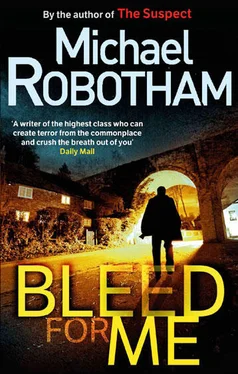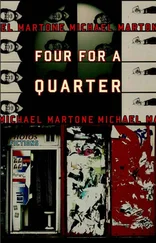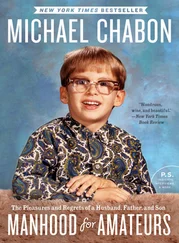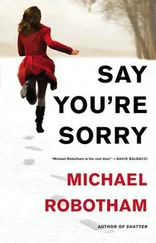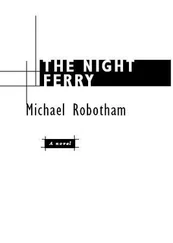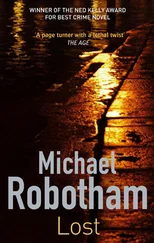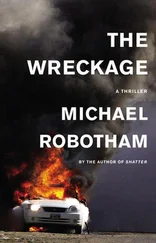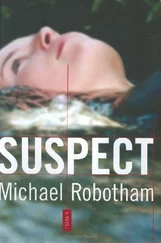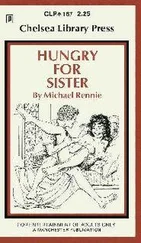‘Ever heard of the Aryan Brotherhood?’
‘The white prison gang.’
‘They make up one per cent of the US prison population and they commit nearly a quarter of the prison murders. That’s where Guilfoyle got his tattoos - the teardrops are supposed to signify a kill.’
‘Who?’
‘A black guy called Walter Baylor. Carl shanked him in a meal queue in front of a hundred and forty-seven witnesses - and nobody saw a thing. That’s the thing with the Brotherhood. People seem to suffer collective amnesia and mass blindness whenever anything happens inside.’
‘Are there any links between Guilfoyle and the men on trial?’
‘The Aryan Brotherhood has been associated with Combat 18, the armed wing of a British neo-Nazi organisation called Blood and Honour. The eighteen comes from the first and eighth letters of the alphabet: Adolf Hitler’s initials. C18 was formed in the early nineties as a breakaway group from the BNP after certain members became disillusioned with the party going soft on the armed struggle and focusing instead on politics.
‘This breakaway group launched a string of attacks on immigrants and ethnic minorities, but most of the ringleaders were rounded up a decade ago during an undercover operation by Scotland Yard and MI5. Some of them were serving British soldiers.
‘Tony Scott was a member of Combat 18. When it was broken up in the nineties it fractured into splinter groups, but managed to survive, linking itself with racist organisations in Russia, Germany and America.’
‘Groups like the Aryan Brotherhood?’
‘Exactly. They also set up chapters in cities like Belfast where some of the former Loyalist paramilitaries were quite sympathetic to the racist agenda.’
‘Brennan grew up in Belfast.’
‘He and Guilfoyle lived only a few streets from each other.’
Cray closes the folder and locks it in her filing cabinet.
‘So they could have known each other?’
‘MI5 has run a check on Guilfoyle. He and Brennan were on the streets of Belfast at roughly the same time, but they were never arrested together or linked.’
A WPC knocks on the office door and hands Cray a DVD. Putting the disk into a machine, The DCI presses a remote and a TV screen illuminates. She hits fast forward. Stop. Play.
‘This was taken outside Annie Robinson’s place.’
The time code on screen says 15.24.07. The blurred figure in the frame is wearing a hooded sweatshirt or a parka, walking away from the camera. It could be a man or a woman. Carrying something.
Thirty yards along the road, the person climbs three steps and presses a buzzer. What button? Lower half. Nothing clearer. The door unlocks. Someone must have released it.
Cray presses fast-forward again. The time code says 15.26.02. The same person on the street again, head bowed, this time walking towards the camera. I can only see the hood and empty hands.
‘That’s what I hate about the morons who install security cameras,’ says Cray. ‘They get the angles all wrong. This is next to useless.’
Rewinding, she runs through the footage again. A left hand reaches out for the buzzer. The right hand holds a waxed paper bag.
‘How far off the ground is that intercom panel?’ I ask.
‘Standard height.’
‘How tall does that make him?’
‘It depends on the focal length of the lens and how far they’re standing from the wall. A photographer could tell us.’
Pressing fast-forward, the DCI advances to the second lot of footage, taken by a different CCTV camera.
‘This was taken two blocks away on Warminster Road.’
A silver Ford Focus is on screen, heading away from the camera.
‘We can’t get a number - the plates are obscured.’
She presses eject and glances at her watch. It’s one o’clock.
‘How’s Sienna?’
‘Holding up.’
Cray turns back to the window. An unlit cigarette dangles from her fingers.
‘I want to take Sienna out of here. We’ll sneak her into the Crown Court. Quietly. Let her see the jury foreman.’
‘And then what?’
The detective doesn’t answer. Maybe she doesn’t know. Shifting slowly, she grabs her coat and opens her office door.
‘First we have to cut Gordon Ellis loose. See where the rabbit runs.’
The hospital receptionist has a voice like an automated message.
‘Are you family?’
‘No, I’m a friend.’
‘Details are only available to family.’
‘I just want to know if she’s OK.’
‘What is the patient’s name?’
‘Annie Robinson. She was brought in last night.’
‘Her condition is listed as stable.’
I stop her before she hangs up. ‘Does she have any family?’
‘Excuse me?’
‘Is there anyone with her?’
The receptionist makes a decision and her tone softens. ‘Her mother and father arrived a while back. They’re with her now.’
‘Thank you.’
Hanging up, I feel a mixture of relief and guilt. Everything I do nowadays seems to have untoward consequences. I expect my bad decisions to have downsides but even my good calls are starting to look shaky. Small things, details I pick up almost instinctively, are beginning to elude me. I should have recognised Sienna’s vulnerability. I should have warned Annie about Gordon Ellis.
Next I call Julianne.
‘Is everything OK?’ she asks.
‘Fine.’
‘Charlie said Vincent had to bring her home.’
‘I got held up. Annie Robinson is in hospital . . . it’s a long story.’
There is a pause. I want her to say something, to tell me what she’s thinking. Instead she says, ‘I have to go. I’m due in court.’
I have time to make one more call. Ruiz rattles off twenty questions, talking in a kind of police shorthand.
‘Is the dyke looking after you?’
‘She’s on our side. I need another favour.’
‘How many you got left?’
‘Keep an eye on Julianne. She’s in court today.’
‘What about the Crying Man?’
‘His name is Carl Guilfoyle. They’ve just issued a warrant for his arrest.’
The footpath outside Trinity Road has become a makeshift media centre for dozens of photographers, reporters and TV crews. There are outside broadcast vans parked in the street and takeaway coffee cups lying crumpled in the gutter.
I’m halfway across the foyer when Natasha Ellis appears in front of me. Dressed in black, her lips bloodless and thin, she looks like a legal secretary with her hair pulled back severely and her eyebrows arching in complaint.
‘Why are you doing this to us?’ she demands, hatred filling her tiny frame.
I try to step around her. She moves with me.
‘That little bitch is lying. Gordon never touched her.’
‘Don’t make things worse, Natasha. I know what Gordon did to you.’
‘You know nothing about me.’
Twisted in anger, her face no longer pretty or pleasant.
‘I know that he groomed you as a schoolgirl. I know that he got rid of his first wife so he could marry you. I think you know it too.’
‘How dare you patronise me!’
‘I apologise if I gave that impression.’
‘It’s not an impression.’
‘I’m sorry just the same.’
‘Fuck you!’
She turns, stumbling on her high heels, before correcting herself. I have no antidote for her distress. Her life is crumbling around her and she can’t do anything except watch.
Moments later, Gordon appears, flanked by his lawyer. Natasha throws her arms around her husband’s neck and he peels them away. They have reached the main doors. The lawyer tries to cover Gordon with a coat, but the schoolteacher brushes it aside.
‘I’ve got nothing to hide,’ he mutters.
More than thirty reporters, photographers and television crews are waiting outside. Clicking shutters and camera flashes greet Gordon’s every footstep, gesture and facial expression. When he brushes his fringe from his eyes, when he tries to smile, when he puts his arm around Natasha.
Читать дальше
